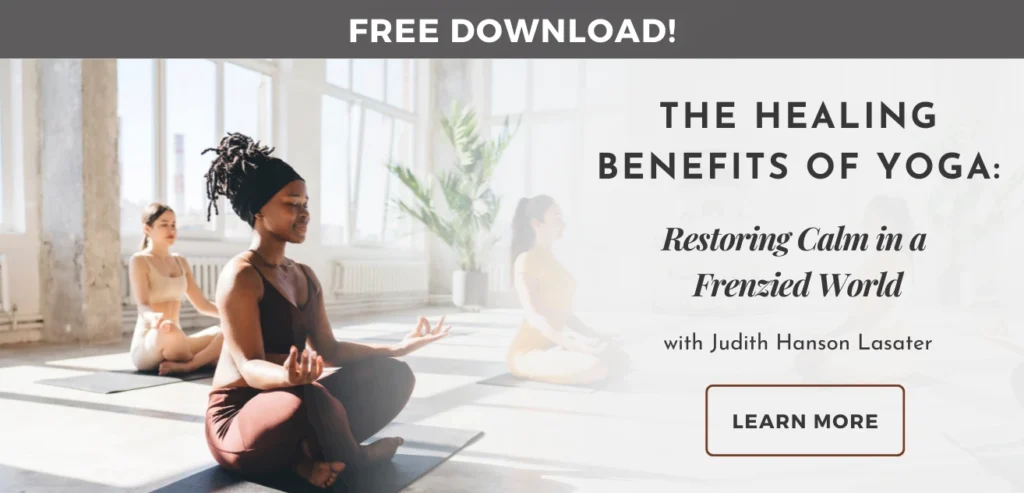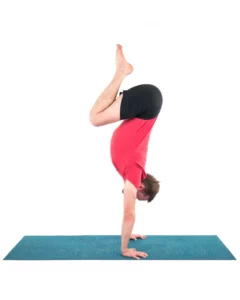Doug Keller: Yoga to Release the Psoas

Article At A Glance
Fascia research pioneer Ida Rolf famously referred to the psoas as “the seat of the soul”. Because the psoas is buried deep beneath the core of the body, it may not always be the most obvious muscle to target in our yoga practice.
But as renowned yoga teacher Doug Keller explains in the video below, the psoas muscle is integral to posture, movement, and much more. In addition to demonstrating the effect of the psoas on the lower back and the health of the center of the body, Doug shows us yoga tools and practices to release a tight psoas here.
Yoga for Psoas Release – What Most People Get Wrong
What is the Psoas?
The iliopsoas is composed of two muscles deep to the core of the body at the center of the body: the iliacus muscle and the psoas muscles (major and minor) The psoas major is a long muscle that starts just below the ribcage, runs deep alongside the spine under the abdominal organs, and attaches to the inside of the femur.
 As Doug explains, the psoas muscle has two functions:
As Doug explains, the psoas muscle has two functions:
1) It plays a major role in posture by maintaining the lumbar curve of the spine, and
2) It is central to movement by flexing the hip.
How a Tight Psoas Affects Posture and Movement
The psoas can become tight in different places, which affects the shape of the lower back for different people. In some cases, a tight psoas can exaggerate the lumbar curve, leading to a forward tilt in the pelvis. By contrast, people who are tight in the upper psoas, such as cyclists or other athletes who perform physical activities while bent over, it can cause the lower back to be flat or rounded. But when the psoas muscle is balanced, it encourages a healthy, neutral lumbar curve.
The psoas also acts as a hip flexor, initiating a forward swing of the leg. When the psoas is working as it should, it maintains a neutral spinal curve and allows the leg to swing without moving the pelvis or spine. But when the psoas is tight, it pulls the spine sideways, leading to problems like herniated discs or discomfort in the hips.
What is the Iliacus Muscle?
The iliacus muscle fills the inner space of the hip bone and works with the psoas to flex the hip. Often, the tension in the psoas also indicates tension in the iliacus. The iliacus can become tight following long periods of time when the hip is flexed, such as sitting at a computer or in meditation. Tightness in the iliacus can cause a pull that’s felt on the hip itself, along the groin, or sometimes on the sitz bones.
Often, when people feel discomfort in their hip, they believe there’s something wrong with the hip joint. But if the hip pain dissipates when you stand up and walk around for a couple of minutes, it’s more likely the iliacus that’s tight and pulling on the hip joint.
How to Release a Tight Psoas
Frequently in yoga, we talk about stretching the psoas. But “stretching” is not the most appropriate term because we don’t stretch the psoas like we would stretch the hamstrings. Simply pulling on the psoas tendon itself does little to lengthen it and may cause discomfort in other parts of the body. Instead, we can lengthen or release the psoas along the entire length of the muscle by activating other muscles of the body to support that lengthening.
One of the key muscle groups involved in supporting the release of the psoas is the core. The hip points draw toward the midline by firming up the lower belly and the lower belly lifts up to support the psoas. However, if there’s a loss of abdominal tone, then as the psoas attempts to flex the leg, it actually starts to pull on the lumbar spine, creating discomfort or problems in the lower back. For this reason, strengthening the abdominals can be key in supporting and releasing the psoas.
Also, read...
Stand Firm: 6 Easy Balancing Moves for Your Daily Yoga Routine
Dec 06 – By: Olga Kabel
The Many Benefits of Twists: 5 Great Yoga Postures for Low Back Health
Dec 03 – By: Sara Doyle, PhD, E-RYT 500
Desk-Friendly Yoga Neck and Shoulder Stretches
Dec 01 – Kathryn Boland, R-CYT, R-DMT
Related courses

Lacey Ramirez writes for YogaUOnline and is an RYT-500 & ERYT-200 yoga teacher, global health researcher, and writer based in St. Louis. Through her work, she seeks to make yoga accessible, inclusive, and equitable.
Lacey discovered yoga as a tool for centering during her years as a competitive runner. Since then, yoga has served as a way to connect with her body throughout her experience of pregnancy and parenthood. She teaches because she hopes others can use this sacred practice for calming, healing, and transformation.
As a yoga teacher, Lacey specializes in teaching restorative, Yin, prenatal, and trauma-informed Vinyasa yoga. She has also completed birth doula and prenatal/postnatal barre certifications and trainings. Additionally, she holds a Masters of Science in Global Health and Population from Harvard T.H. Chan School of Public Health. To learn more and connect, visit her website laceyramirez.com

 Doug Keller’s background reflects a lifelong commitment to studying, imbibing, and sharing the vast field of knowledge and practice known as yoga. After receiving honors and graduate degrees in philosophy from the top Jesuit universities in the United States, Georgetown, and Fordham Universities, and teaching philosophy at a college level for several years, he then pursued his ‘post-graduate’ education in the practical experience of yoga at the Siddha Meditation Ashram, Gurudev Siddha Peeth in India, for seven years. He spent a total of 14 years doing service, practicing, training in and teaching yoga in Siddha Meditation Ashrams worldwide. He received intensive training in the Iyengar system in New York City, mainly with senior certified Iyengar teacher Kevin Gardiner. He also practiced Ashtanga Vinyasa Yoga in India, and became one of the first certified Anusara Yoga teachers, producing three highly respected books on asana, pranayama, and yoga philosophy.
Doug Keller’s background reflects a lifelong commitment to studying, imbibing, and sharing the vast field of knowledge and practice known as yoga. After receiving honors and graduate degrees in philosophy from the top Jesuit universities in the United States, Georgetown, and Fordham Universities, and teaching philosophy at a college level for several years, he then pursued his ‘post-graduate’ education in the practical experience of yoga at the Siddha Meditation Ashram, Gurudev Siddha Peeth in India, for seven years. He spent a total of 14 years doing service, practicing, training in and teaching yoga in Siddha Meditation Ashrams worldwide. He received intensive training in the Iyengar system in New York City, mainly with senior certified Iyengar teacher Kevin Gardiner. He also practiced Ashtanga Vinyasa Yoga in India, and became one of the first certified Anusara Yoga teachers, producing three highly respected books on asana, pranayama, and yoga philosophy. Recent articles
Stand Firm: 6 Easy Balancing Moves for Your Daily Yoga Routine
Dec 06 – By: Olga Kabel
Restorative Yoga: A Sequence to Build and Maintain Resilience
Dec 05 – By: Jennifer Willams-Fields, E-RYT 200
The Many Benefits of Twists: 5 Great Yoga Postures for Low Back Health
Dec 03 – By: Sara Doyle, PhD, E-RYT 500
Categories
Upcoming courses
Reconnecting with Strength: Your Path to Building Greater Inner Resilience
With Arielle Schwartz
Recent articles
Almost there...
Sorry, we couldn't find anything...
Yoga Practice Tips
Stand Firm: 6 Easy Balancing Moves for Your Daily Yoga Routine
My son loves to dig, so he zooms straight for the sandbox whenever we…
Dec 06 – By: Olga Kabel
Beginning Yoga
Restorative Yoga: A Sequence to Build and Maintain Resilience
Life is hard. Each day work, family, finances, and so much more can take…
Dec 05 – By: Jennifer Willams-Fields, E-RYT 200
Yoga Practice Tips
The Many Benefits of Twists: 5 Great Yoga Postures for Low Back Health
Twists don’t have to tie you up in knots! In this blog post, we…
Dec 03 – By: Sara Doyle, PhD, E-RYT 500



